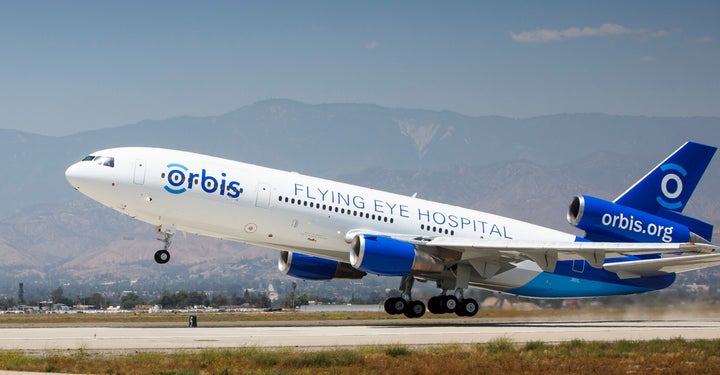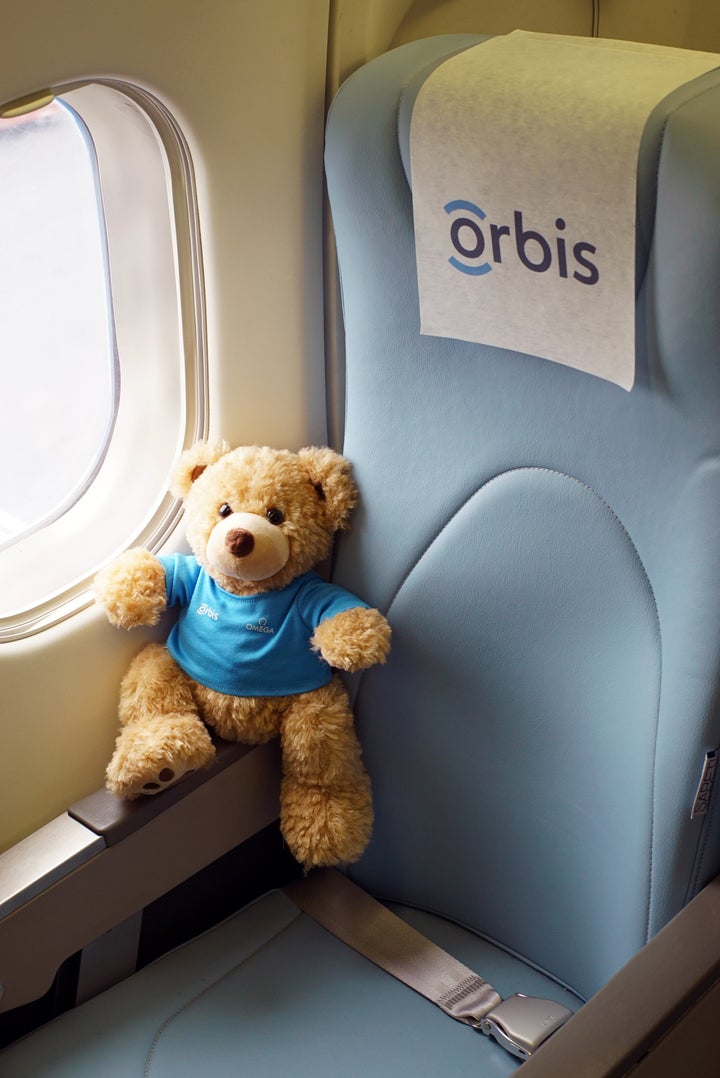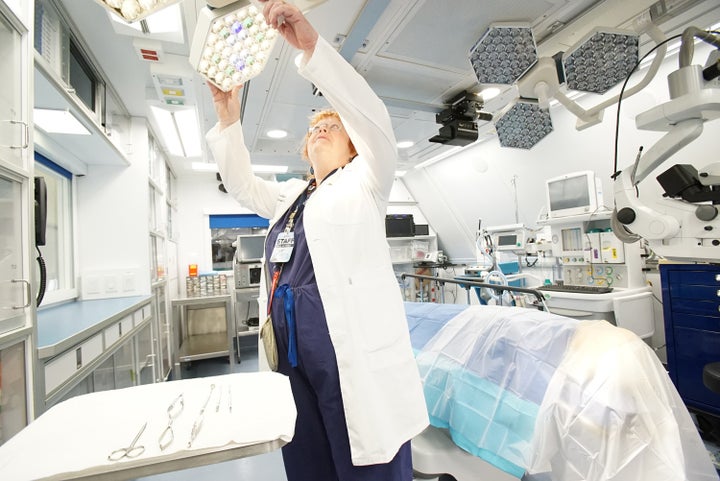
Sometimes I mention to friends that I volunteer for a Flying Eye Hospital. I love the reactions I receive. “A hospital on an airplane, really?” “Is surgery being done in the air?” “How is this possible!” “I can’t quite imagine that!” No matter what the reaction, everyone is interested in hearing the story of the Flying Eye Hospital. (The surgery does take place only when the plane is on solid ground, just in case you are wondering.) The Flying Eye Hospital is operated by the international nonprofit ORBIS as a part of the organization’s mission of bringing the world together to fight blindness. I began my journey with this organization about five years ago, and it has been an incredible experience.
Briefly, this is how ORBIS works: Highly-regarded Ophthalmologic surgeons from all over the world volunteer their time to perform eye surgeries and train practitioners on the Flying Eye Hospital. ORBIS uses the Flying Eye Hospital in developing countries, where people do not have access to sight-saving treatment. The plane is equipped with a patient care and laser treatment room, operating room, sterilization room and a pre-and post-operative care room with three patient bays, all the necessary support areas to meet modern medical standards, and a classroom—everything that is needed to perform such surgeries as cataract, retina, strabismus and others. ORBIS also simultaneously works in the local hospital on these trips performing more surgeries in the local facility and providing training for the hospital staff. Many of these hospital-based programs continue long after the Flying Eye Hospital leaves for a new location.
Training is the real mission behind ORBIS. Performing surgeries here and there around the world is wonderful for the many people who are treated, but if the actual surgery was the only mission, just a fraction of the people in the world who need help would be treated. By training the local practitioners and hospital staff, the impact of the plane and ORBIS expands exponentially. The local physicians, nurses and technicians acquire skills needed to continue providing care once the Flying Eye Hospital leaves for another location.
By working to build the expertise of eye care professionals around the world, the mission of ORBIS continues whether or not ORBIS staff is present. Some statistics: Over the past 5 years, through Orbis programs, almost 11,000 trainings have been completed by doctors and 104,000 by nurses, biomedical engineers, other health faculty staff, community volunteers and others. In addition, almost 12 million screenings and eye examinations have been performed on the Flying Eye Hospital and at partner institutions.
ORBIS is celebrating this summer because a new plane has just been christened! After 22 years of amazing service, the old DC-10 plane has retired and a new, modern Flying Eye Hospital is ready for use. Without getting too technical, the newest Flying Eye Hospital was built in an MD-10 cargo plane donated by our generous aviation sponsor, FedEx, which not only donated the plane but will provide ongoing maintenance and pilots for the plane.
When you are on the Flying Eye Hospital, you absolutely will not believe you are on a plane. Imagine a huge cargo plane, divided into an upper level for the surgery center and a lower deck for storage and support equipment. On the upper level, directly behind the flight deck is a classroom. Each day of a Flying Eye Hospital program, this classroom is in use—lectures, videos, watching live surgeries and asking the operating surgeon questions. Patients enter the plane and go into a waiting room/exam area. After the proper questions are asked and the consenting completed, the patient goes back into the pre-op/post-op area to prep for the surgery. Three patient bays are available with staff RNs ready to care for the patient. All the monitoring equipment needed and teddy bears for the children (the most important thing for them) are available.

The patients are taken into a state-of-the art Operating Room for surgery and after surgery brought back into the pre-op/post-op area for recovery. Instruments are processed after surgery in processing rooms designed to prevent infections. A day or two after surgery, the patient returns to the plane for a post-op visit. Just imagine the joy when the patch is removed and the patient can see. Watching the children—well, words aren’t sufficient.
The lower deck of the plane is filled with all the support equipment needed for the surgery center—generators for uninterrupted power, air and water filtration systems, air conditioners and a load device for taking some of these items off the plane for use during surgery. Patient safety was absolutely at the top of the design considerations list.
The Flying Eye Hospital will travel to Shenyang, China for its first program using the new plane in September, and I’ll be there to see the new plane in action. I’ve been on four ORBIS FEH programs and although each one is unique, I’m honored to be a part of this inaugural program.
For more information about ORBIS, visit www.Orbis.org.
Interested in seeing the plane? The Flying Eye Hospital is currently on a tour in the United States. Sign up at www.orbis.org/page/-/md-10-launch/index.html
If you really like statistics, here’s a few more.
In 2015 alone, more than 2 million screenings and examinations were performed on the Flying Eye Hospital and at partner institutions, and 30,000 trainings were conducted for doctors, nurses, eye care workers, community workers and volunteers.
• 2,125,401 million eye screenings/examinations (1,473,312 million pediatric screenings/ examinations) were performed on the Flying Eye Hospital and at partner institutions
• 1,414 training courses completed by doctors
• 28,912 nurses, biomedical engineers, other health facility staff, community volunteers and others were trained through Orbis programs
65,558 eye surgeries performed (24,277 pediatric surgeries)

